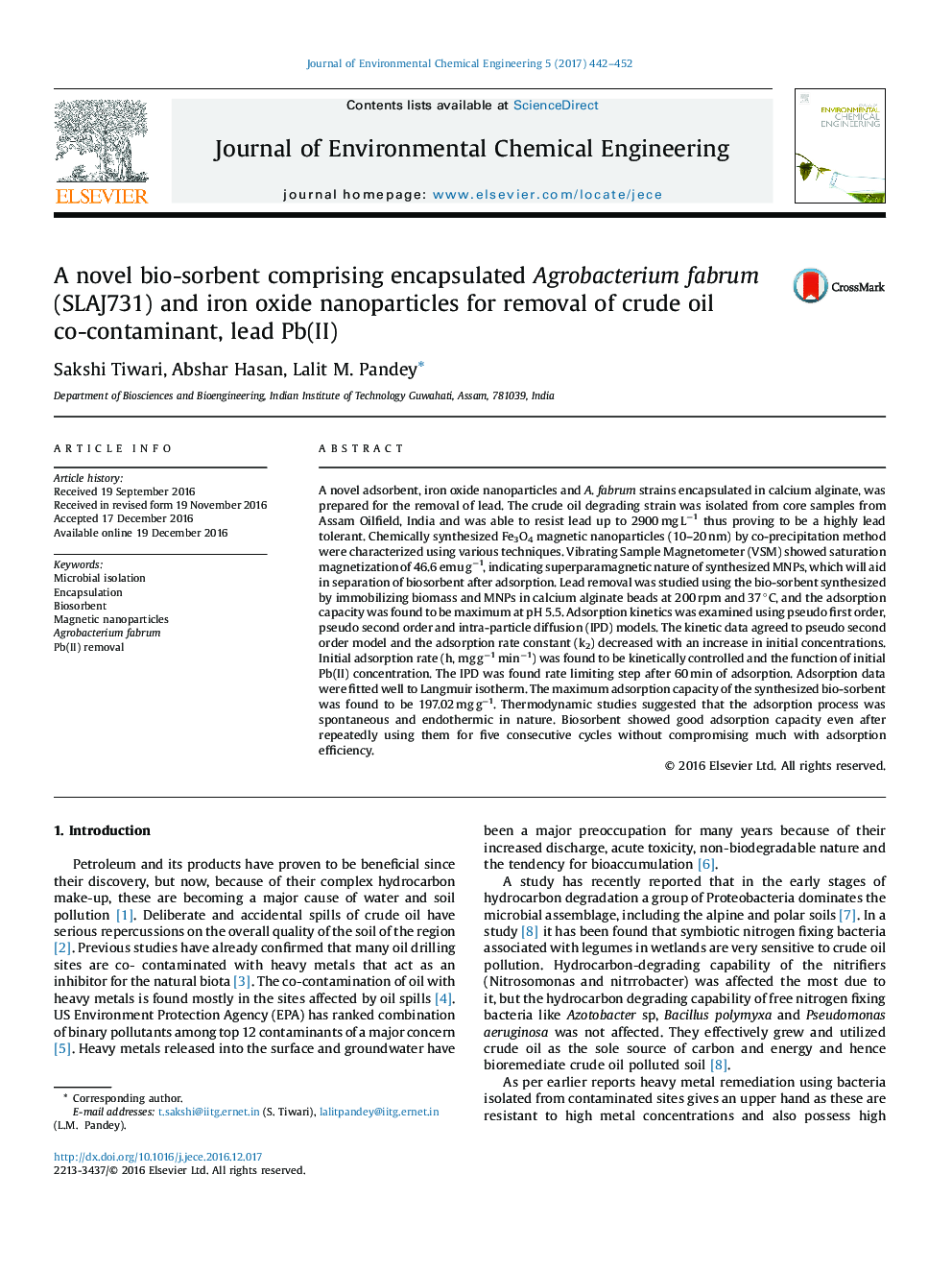| Article ID | Journal | Published Year | Pages | File Type |
|---|---|---|---|---|
| 6477381 | Journal of Environmental Chemical Engineering | 2017 | 11 Pages |
â¢Isolation and characterization of Pb(II) tolerant bacterium from petroleum core.â¢Lead bio-sorption on immobilized iron-oxide nanoparticles and A. fabrum beads.â¢High lead adsorption capacity of 197.02 mg gâ1 of the synthesized bio-sorbent.â¢Pb(II) removal data agreed to pseudo second order kinetic model.â¢Intraparticle diffusion was rate limiting step after 60 min of adsorption.
A novel adsorbent, iron oxide nanoparticles and A. fabrum strains encapsulated in calcium alginate, was prepared for the removal of lead. The crude oil degrading strain was isolated from core samples from Assam Oilfield, India and was able to resist lead up to 2900 mg Lâ1 thus proving to be a highly lead tolerant. Chemically synthesized Fe3O4 magnetic nanoparticles (10-20 nm) by co-precipitation method were characterized using various techniques. Vibrating Sample Magnetometer (VSM) showed saturation magnetization of 46.6 emu gâ1, indicating superparamagnetic nature of synthesized MNPs, which will aid in separation of biosorbent after adsorption. Lead removal was studied using the bio-sorbent synthesized by immobilizing biomass and MNPs in calcium alginate beads at 200 rpm and 37 °C, and the adsorption capacity was found to be maximum at pH 5.5. Adsorption kinetics was examined using pseudo first order, pseudo second order and intra-particle diffusion (IPD) models. The kinetic data agreed to pseudo second order model and the adsorption rate constant (k2) decreased with an increase in initial concentrations. Initial adsorption rate (h, mg gâ1 minâ1) was found to be kinetically controlled and the function of initial Pb(II) concentration. The IPD was found rate limiting step after 60 min of adsorption. Adsorption data were fitted well to Langmuir isotherm. The maximum adsorption capacity of the synthesized bio-sorbent was found to be 197.02 mg gâ1. Thermodynamic studies suggested that the adsorption process was spontaneous and endothermic in nature. Biosorbent showed good adsorption capacity even after repeatedly using them for five consecutive cycles without compromising much with adsorption efficiency.
Graphical abstractDownload high-res image (154KB)Download full-size image
